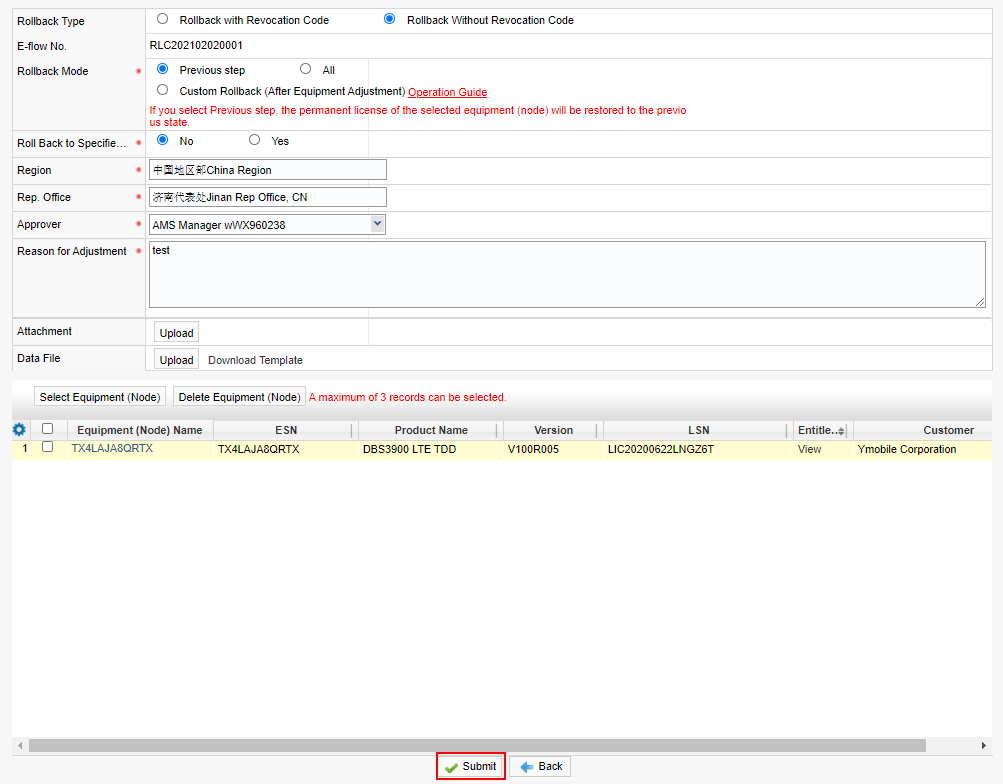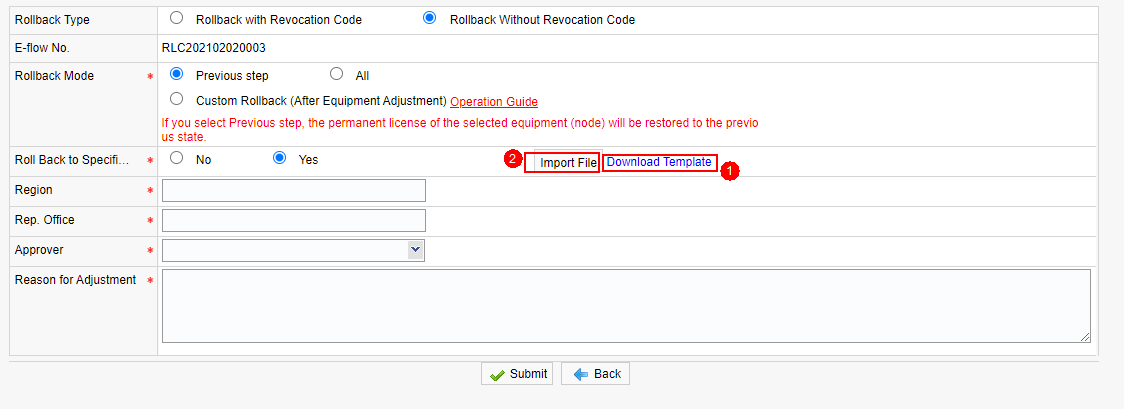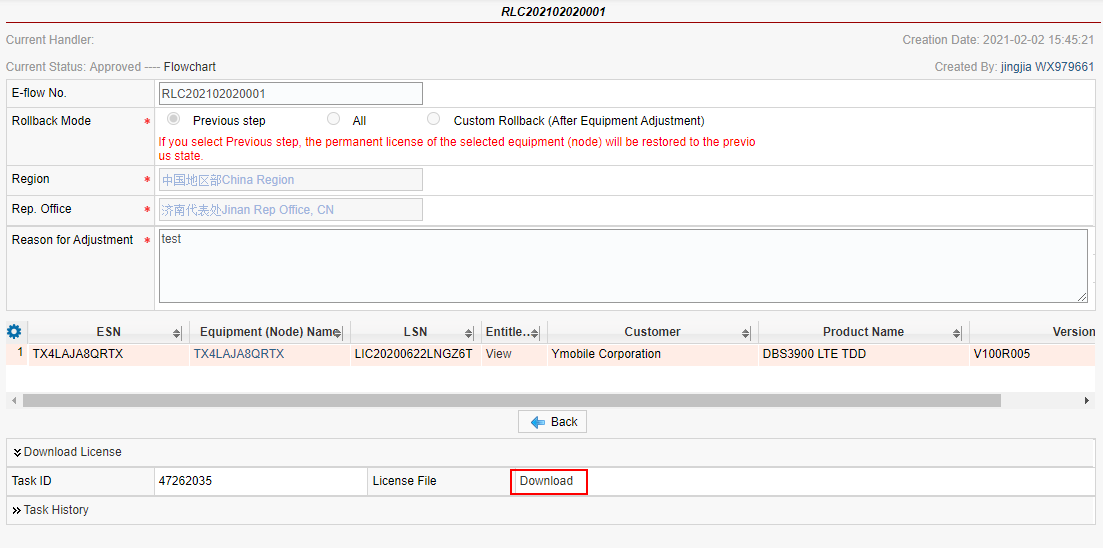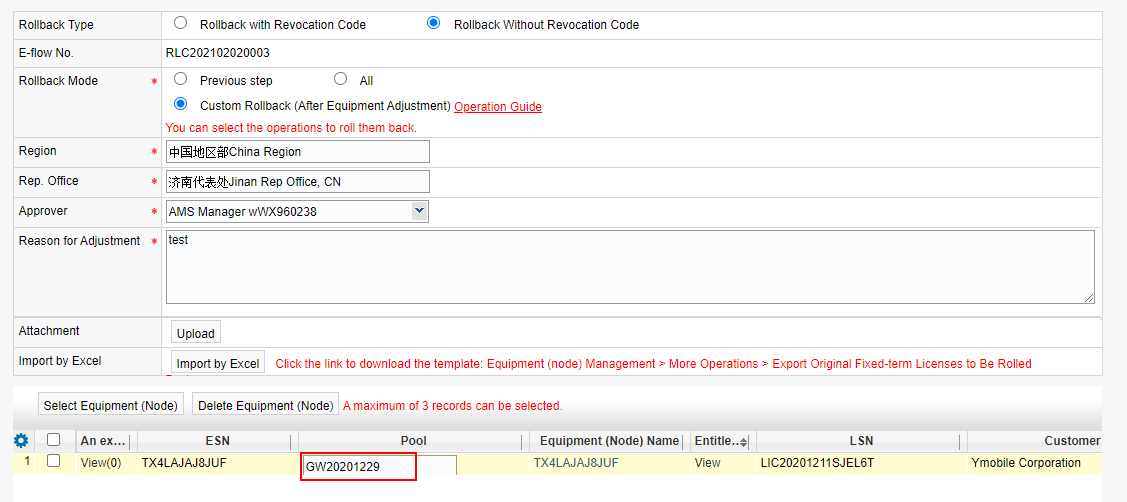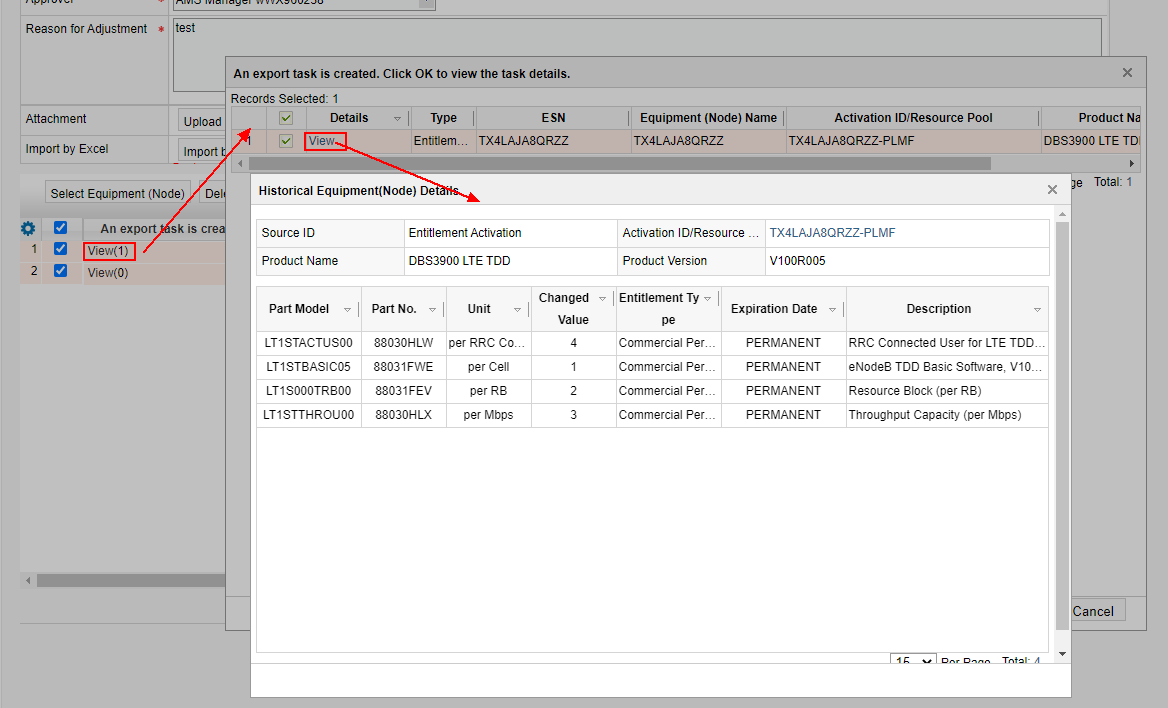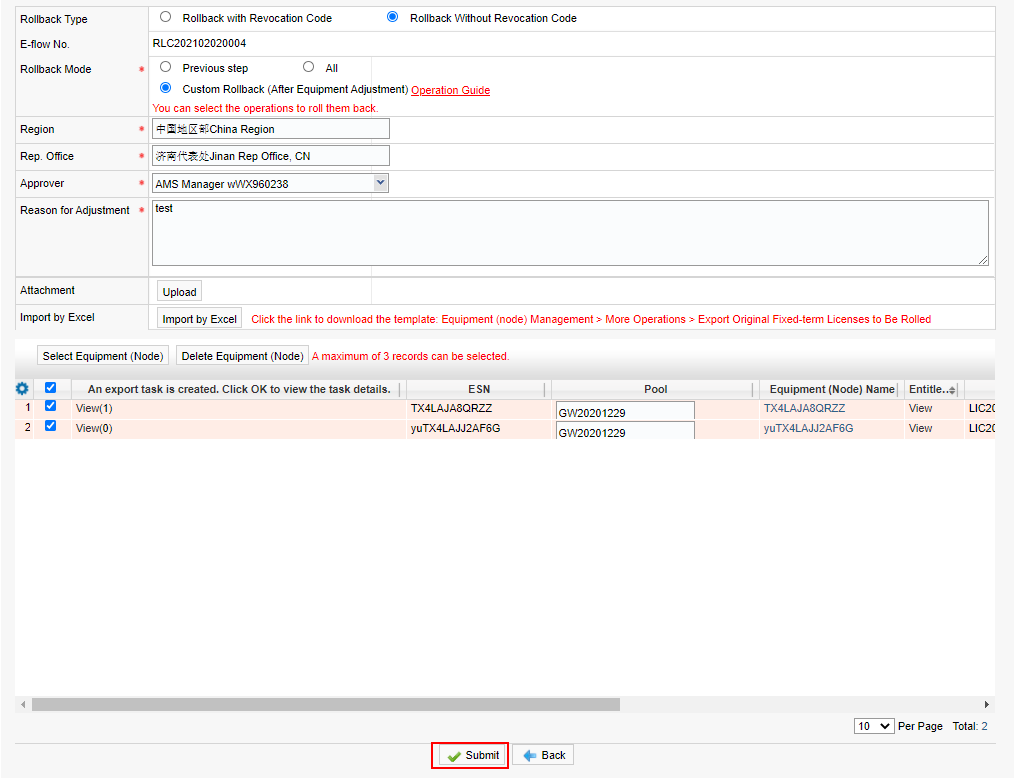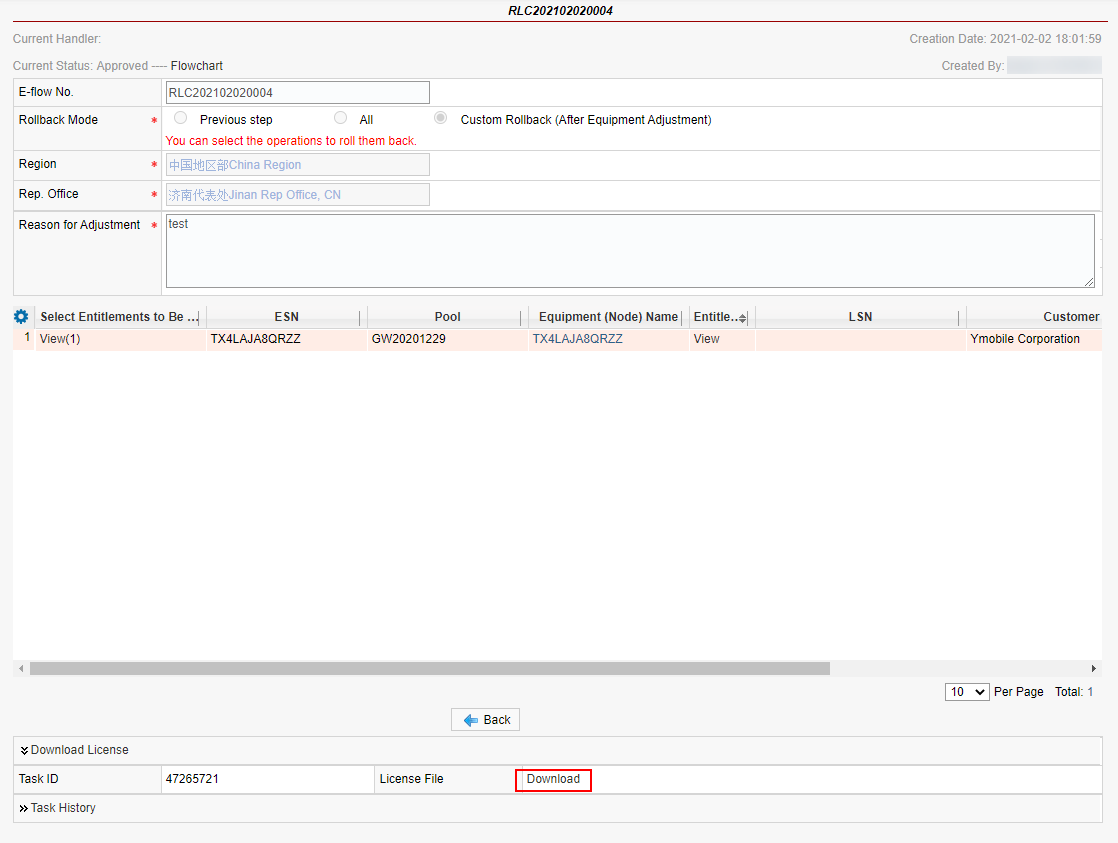Permanent License Rollback
Applicable scenarios: This function can be used to roll back a license when the entitlement is incorrectly bound or the license is returned.
Business rules:
The function of rolling back an entitlement is mainly used to bind an entitlement to an incorrect device. After the entitlement is rolled back, the entitlement can be reactivated on the correct device. If the entitlement is rolled back, the approval is not required. If the entitlement is not rolled back, the approval is required.
The equipment (node) whose network adjustment or equipment (node) combination with the same ESN is performed cannot be rolled back.
For example, if you select Rollback Back, entitlement B is rolled back to the Ready state and only the license activated by entitlement A remains on the NE. If you select Rollback All, entitlements A and B are rolled back to the Ready state and no license is available on the NE.
To roll back to a specified pool, you need to import a template. Cross-pool rollback is supported. Pay attention to the pool name when entering the template.
Roll back the specified pool, including the pool of the corresponding product on the NE.
When you use the customized rollback function of exporting (NE) operation records, the template contains the primary key information (system fields) for rollback. Therefore, you cannot modify the template randomly. On the Config Data sheet, you can modify only the values in column K. If rollback is required, enter Y. If rollback is not required, enter N or delete the row. Do not directly modify the ESN and NE name in the original data.
Customized rollback supports rollback of any step in equipment (node) operation records. The system deletes the customized step and recalculates the remaining part to generate a new license file. The recalculated inventory can be rolled back only when the recalculated inventory is greater than 0.
Procedure:
a) Roll back the previous step or all.
Step 1: Select a rollback mode, enter the equipment (node) to be rolled back, and click Submit. (To roll back a pool, you can only upload the template to upload the equipment and pool data to be rolled back.)
Note: For a non-specified pool rollback, a few revocation codes can be entered on the page. For a large number of revocation codes, import an XML file to import them in batches. Roll back a small amount of data online. Roll back a batch of data online through a background task.
Rollback display in non-customized pool mode:
Specify the pool rollback display.
Note: If you select Rollback to a specified pool, only the NEs activated in the pool can be rolled back to the pool. Import the revocation code and target pool using a template, submit the workflow, and roll back the resource items based on the target pool. After the rollback task is complete, the resource items whose version is earlier than or equal to the target pool are rolled back to the target pool, the resource items whose version is later than the target pool are rolled back to the original pool.
Step 2: After the license file is submitted, the license file is downloaded if the license revocation code is available. If no revocation code is available, view the approval progress on the My Applications page and download the license file.
b) Custom Rollback
Step 1: Select Custom Rollback.
Step 2: Click View under the data to be rolled back. In the dialog box that is displayed, select the data to be rolled back. Click View in the Details area to view the details of each data.
Note: To perform customized rollback for adjustment, license return, or license splitting, you must specify a pool before selecting adjustment, license return, or license splitting. Otherwise, the rollback cannot be performed. This is because the adjusted amount needs to be supplemented from the pool or the adjusted amount will be returned to the specified pool. The rollback can be performed only after the specified product is of the same version and the corresponding BOM amount is supplemented. (The rollback can be performed only when the calculation result is greater than 0.)
Step 3: After selecting the data to be rolled back, click Submit.
Step 4: After the application is submitted, the e-flow is approved. After the application is approved, the e-flow is rolled back (the e-flow status is notified by the e-flow by email). Click Download to download the license to the local PC.
